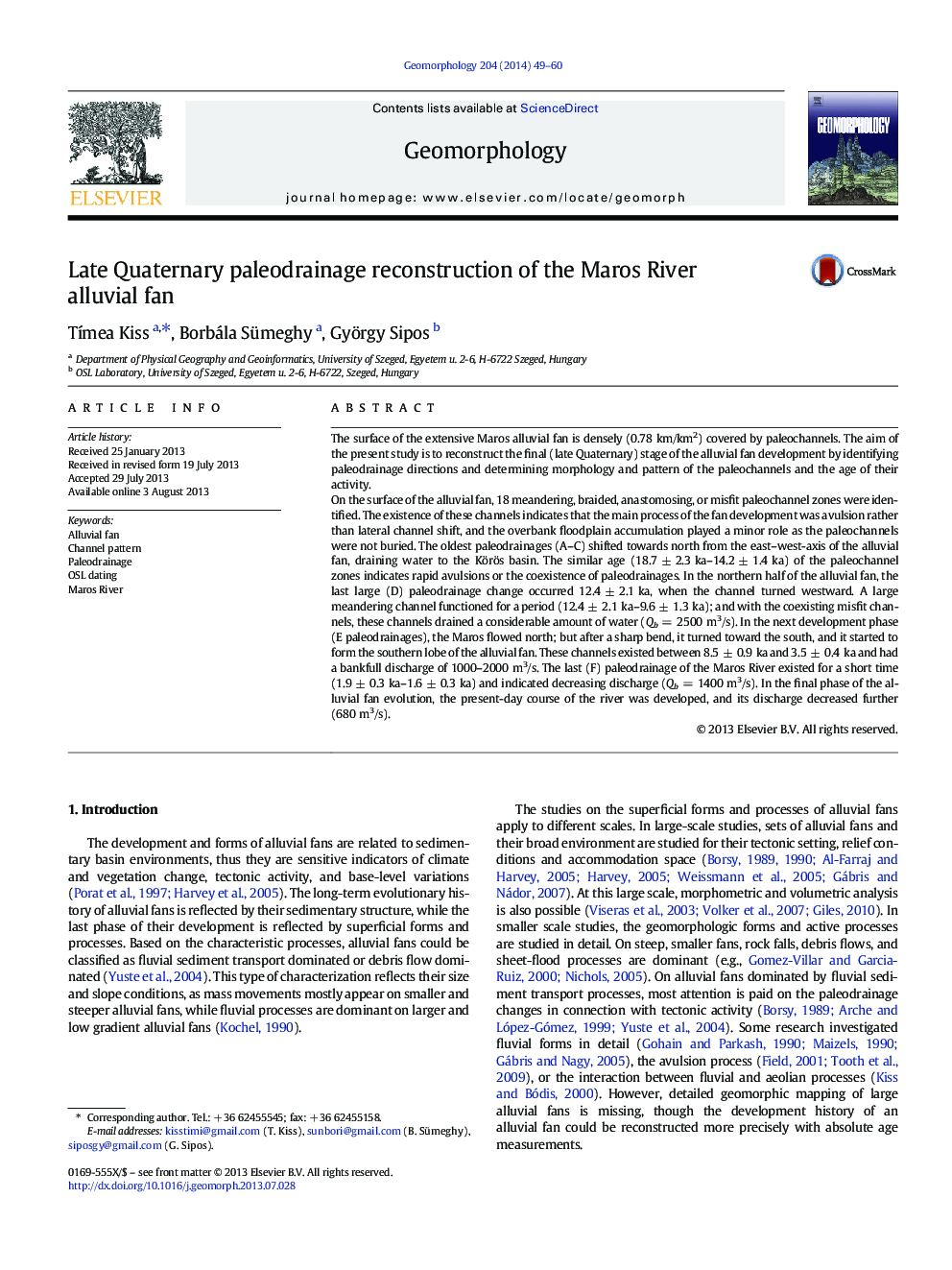| کد مقاله | کد نشریه | سال انتشار | مقاله انگلیسی | نسخه تمام متن |
|---|---|---|---|---|
| 6432710 | 1635445 | 2014 | 12 صفحه PDF | دانلود رایگان |

- The surface of the Maros alluvial fan developed in the last 18,000-20,000Â years.
- The geomorphology of the alluvial fan is dominated by fluvial forms.
- The paleochannels form 18 distinctive zones, and 6 paleodrainages.
- The paleodischarge of the Maros decreased in the Late Holocene.
The surface of the extensive Maros alluvial fan is densely (0.78 km/km2) covered by paleochannels. The aim of the present study is to reconstruct the final (late Quaternary) stage of the alluvial fan development by identifying paleodrainage directions and determining morphology and pattern of the paleochannels and the age of their activity.On the surface of the alluvial fan, 18 meandering, braided, anastomosing, or misfit paleochannel zones were identified. The existence of these channels indicates that the main process of the fan development was avulsion rather than lateral channel shift, and the overbank floodplain accumulation played a minor role as the paleochannels were not buried. The oldest paleodrainages (A-C) shifted towards north from the east-west-axis of the alluvial fan, draining water to the Körös basin. The similar age (18.7 ± 2.3 ka-14.2 ± 1.4 ka) of the paleochannel zones indicates rapid avulsions or the coexistence of paleodrainages. In the northern half of the alluvial fan, the last large (D) paleodrainage change occurred 12.4 ± 2.1 ka, when the channel turned westward. A large meandering channel functioned for a period (12.4 ± 2.1 ka-9.6 ± 1.3 ka); and with the coexisting misfit channels, these channels drained a considerable amount of water (Qb = 2500 m3/s). In the next development phase (E paleodrainages), the Maros flowed north; but after a sharp bend, it turned toward the south, and it started to form the southern lobe of the alluvial fan. These channels existed between 8.5 ± 0.9 ka and 3.5 ± 0.4 ka and had a bankfull discharge of 1000-2000 m3/s. The last (F) paleodrainage of the Maros River existed for a short time (1.9 ± 0.3 ka-1.6 ± 0.3 ka) and indicated decreasing discharge (Qb = 1400 m3/s). In the final phase of the alluvial fan evolution, the present-day course of the river was developed, and its discharge decreased further (680 m3/s).
Journal: Geomorphology - Volume 204, 1 January 2014, Pages 49-60